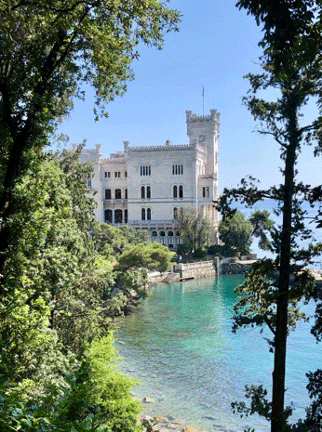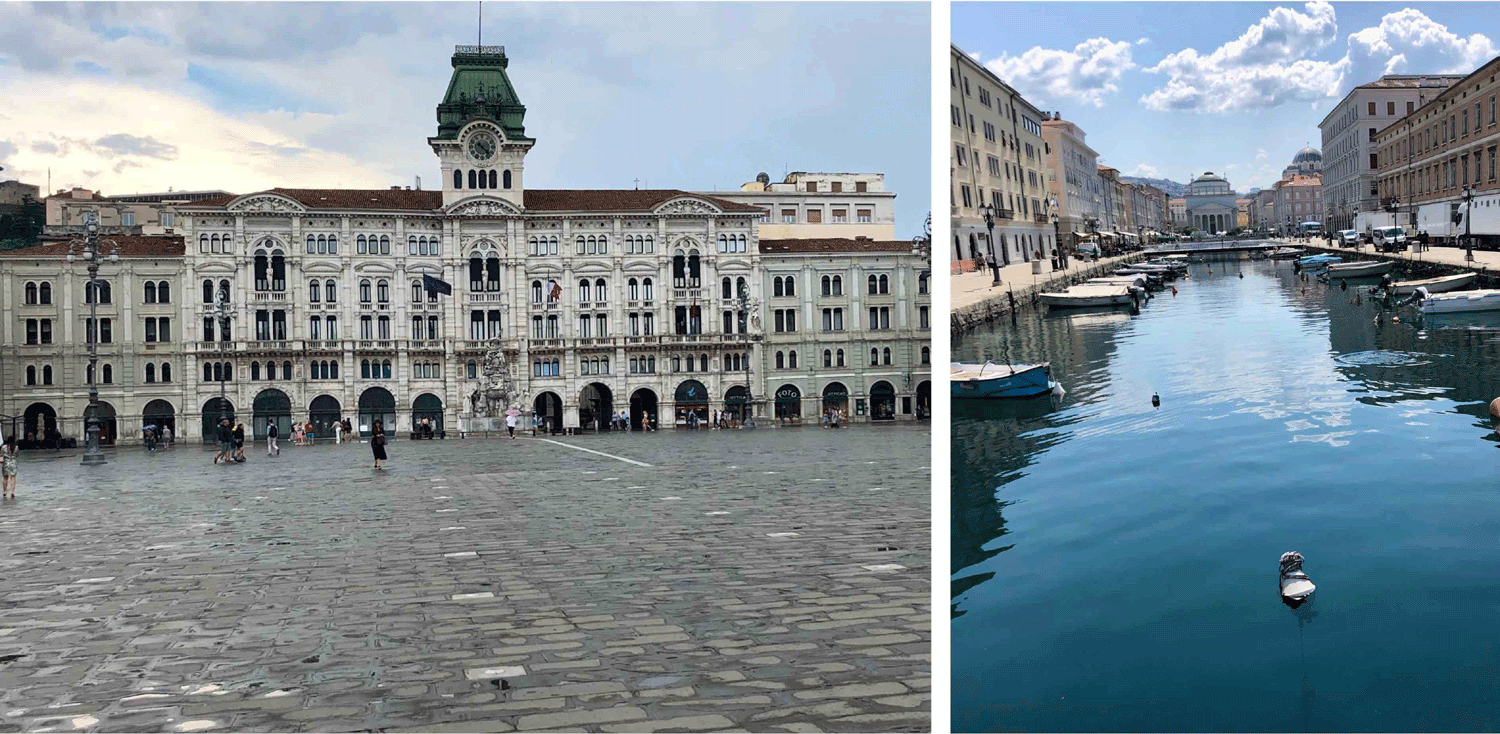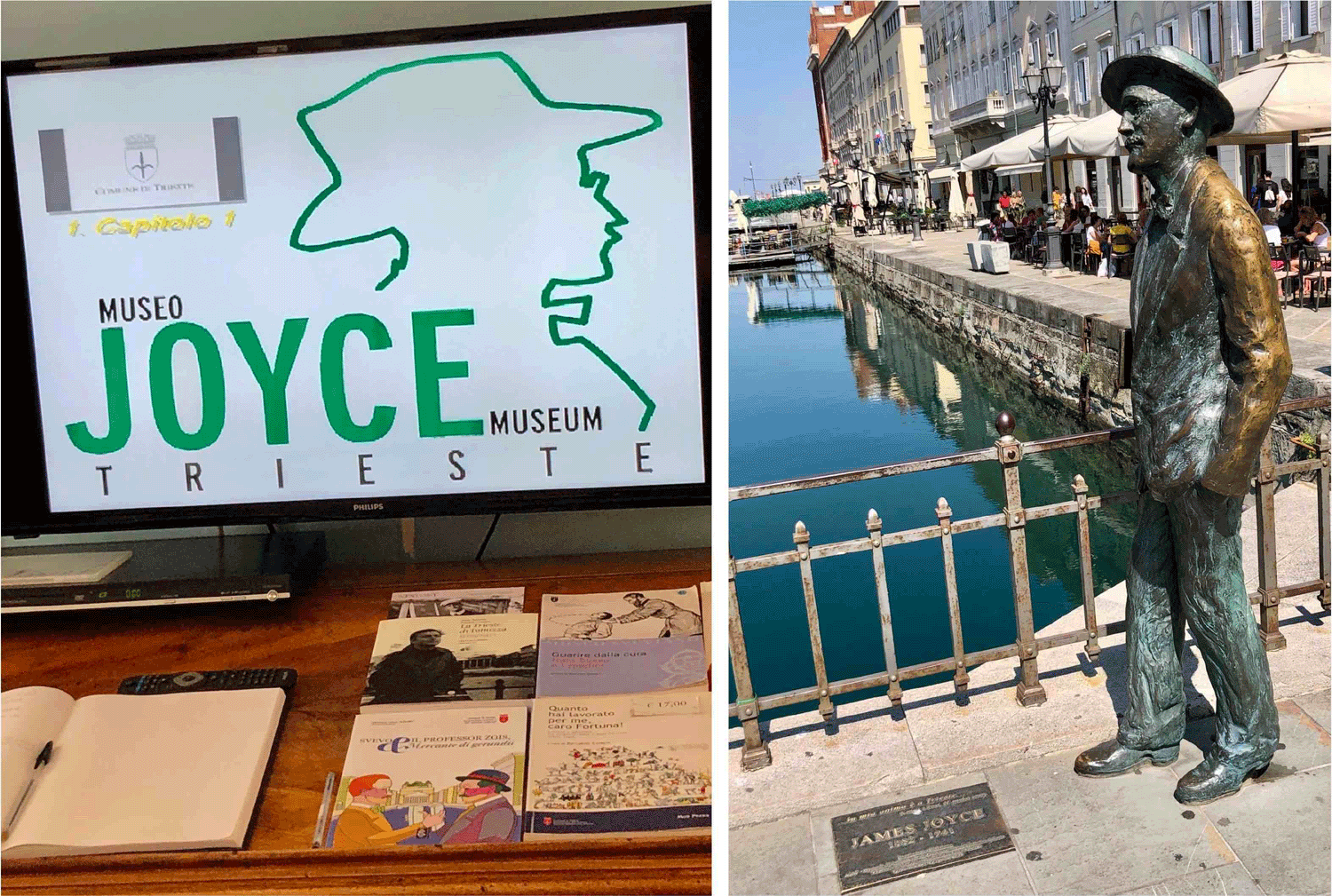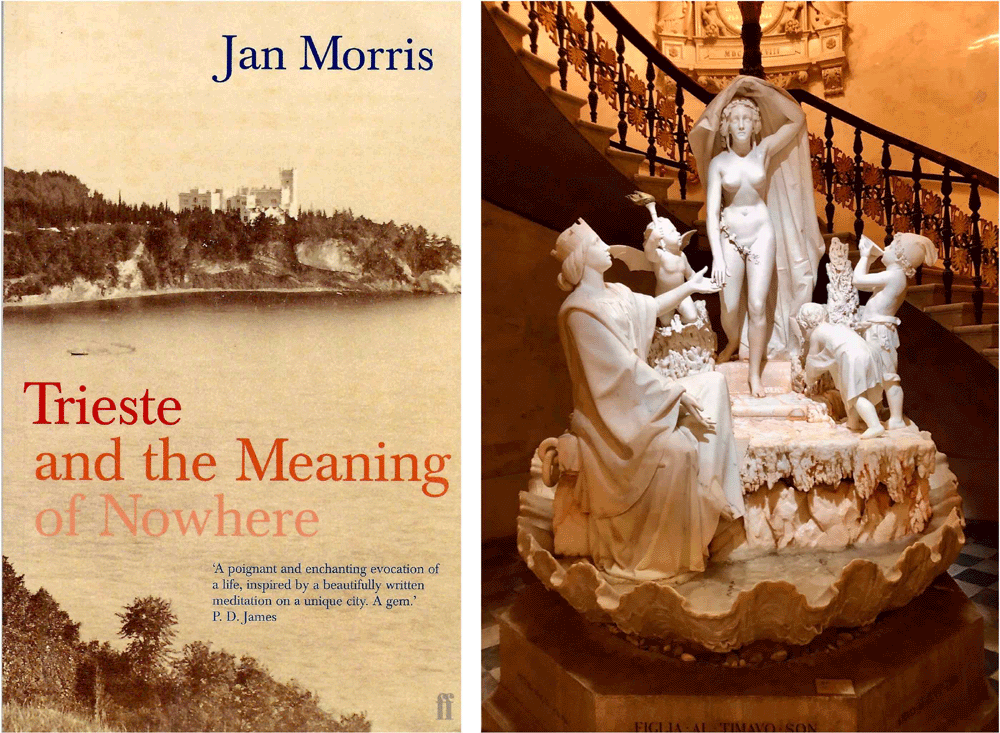Trieste
Ever since I read Jan Morris’s book Trieste and the Meaning of Nowhere several years ago, the city has been on my ‘bucket list.’ The trip home from Bologna gave me a chance to make that a reality – and a re-reading of the book made the visit especially interesting!

I was helped by the fact that I had arranged for an especially fascinating guide: Lubos Dzuro-Canulli has lived in the city for decades, and made sure that I visited the appropriate cafes, museums and churches. He also went out of his way to arrange a visit to Miramare, a site I had negligently failed to include in my original itinerary – but was not to be missed! Maximilian, younger brother of the Austrian Emperor Franz Joseph I, built it in the 1850s – but was soon on his way to North America (with Napoleon III’s assistance) to become Emperor of Mexico. That was ill-advised, because shortly thereafter he was put up against a wall in Mexico and shot. His wife Carlotta returned to Europe, but spent the next sixty years in an unfortunate mental state – and “Carlotta’s curse” still haunts the castle.

Other Trieste sites were also fascinating. The city is well known for the Canal Grande and Piazza Unitá d’Italia (the largest public square in Italy) – but in recent years Trieste has become a mecca for James Joyce fans. The author spent more than a decade there, over a sixteen year period – completing some of his most important works (e.g., Dubliners, A Portrait of the Artist as a Young Man), and developing the structure that ultimately changed Ulysses from a short story into a novel. Joyce’s path in Trieste is hard to follow, because he was always short of funds – and left a trail of disgruntled landlords in numerous apartments across the city. Today, however, he has his own museum and a statue on a bridge crossing the Canal Grande.

A wealthier Trieste aristocrat, Pasquale Revoltella, lived in a mansion on the Piazza Venezia near the waterfront – which today houses the Museo Revoltella and the Gallery of Modern Art. Built in the 1850’s, it’s really quite stunning – one can get a sense of the opulence in the statuary at the base of the staircase, although the picture doesn’t convey that even its banister is lined with red velvet.

I had an early morning flight leaving Trieste, and so arranged to spend the previous night in the town of Monfalcone, closer to the airport. I hadn’t realized the importance of that town for the ship-building industry…. but that was made clear when I saw the three large cruise ships under construction on the waterfront. A ship-building museum, MuCa (Museo della Cantieristica di Monfalcone) lays out the fascinating history of that industry in the ‘company town,’ and I stayed in the Europalace Hotel – originally constructed in the 1920s as a boarding place for unmarried workers. Today it has been completely renovated, and even has its own small museum documenting a century of industrial change.